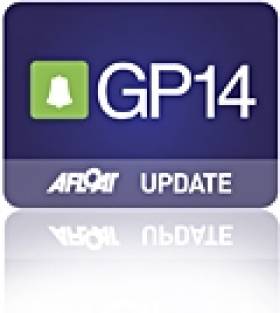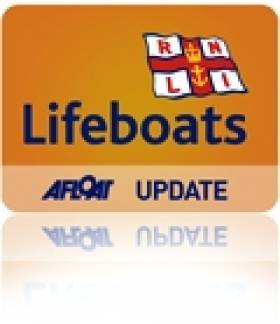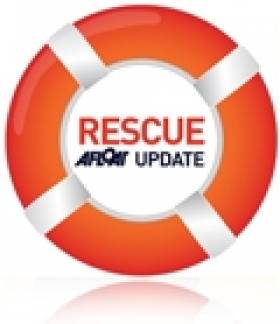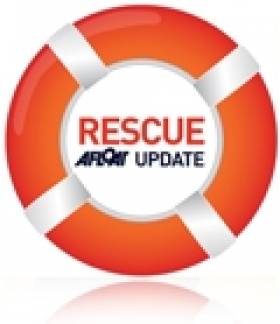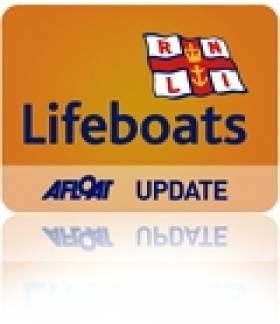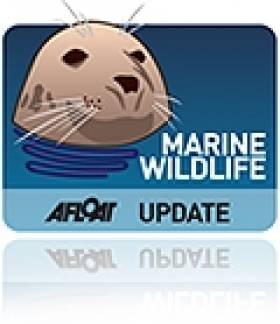Displaying items by tag: Skerries
A healthy forty seven dinghies competed for the Irish GP14 National Sailing Championships title last weekend and Greystones sailor Shane McCarthy, now UK based, with crew Andy Davis took the title, winning the last four races. Class president Richard Street gives a blow by blow account of how the title was won.
Skerries was our venue, and a fine spot to host a regatta it is .The GP fleet were really well taken care of by all the members of the club who put aside their own weekend so we could have a lot of fun. Thank you.
Not only were we blessed to have a great turnout, but the calibre of it was pretty impressive too. The top ten counted two World Champions, a European Champion, a two time Olympian, a six time Irish National champion, a multiple English National Champion. Steven Nelson and his brother Jonny slotted right in amongst them to blow most of the Gold fleet away and take the crown in their division by a huge margin.
Race officer Liam Dineen and his crew spent a long weekend at sea for our enjoyment a massive thank you to him and his team. Sunday, especially can not have been easy.
On day one Mike Senior and Chris White were consistency personified, two races, two bullets, as were Shane Mc Carthy and Andy Davis with two seconds.
Race one paid off beautifully for those who headed straight inshore on the first beat, but if you made the mistake of repeating that on the second beat you got hosed. Main feature of the weekend was big breeze and some massive shifts. Keith Louden and Dessie Hughes got their result of the weekend with a third skinning their northern rivals theyoung Mc Guinness boys in the process.cue smiles allround.On one boat.
Race two and a big right shift up the last beat got a few boats that weren’t looking too hot, out of trouble . Curly once had a boat by that name, I think, and he and Laura were chased into third by his daughter Melanie crewing for Ger Owens. Their boat name? True Belle.
Day two Sunday, blowing hard enough that rumour has it the RO wasn’t sending us out. A few launches put paid to that, and we’ve raced in far worse.
The Imperious English pair got their first challenge as Shane and Andy took their first win. They had been led around the first windward mark by Steven and Jonny, as fine a sight as ever we’d see…until they repeated the feat the following day ! Now if the two boys had popped the kite they might have held on to the lead , but they got swallowed up. Mike and Chris had to work to hold onto the leaders and were chased home by Dave Young and Seonaid Fleming who registered their high point for the series. The effort must have taken its toll as they spent a large portion of the afternoon swimming, which meant utter exhaustion for them by the end of the day.Still smiling though.
Race four looked like it might never happen. 30 and 40 degree windshifts coming down the course with each cloudburst. Rain that was thick as fog and more than one attempt at starting which had to be abandonded with twenty seconds to go. Inevitably when the gun did go, a line that ten seconds earlier had been pin end favoured but congested,suddenly got much more so. A big shift to the left saw the fleet react, but back up the line , with room to move, Niall Henry and James Conlon crossed on port at full tilt to negate much of the advantage those by the pin had. In the lightest breeze of the weekend and heading straight into a short steep chop concentration was essential, lose it and you got spat out the back.
The end of that race saw the score tied at two all as Shane took the win followed by Mike Senior.
With a building breeze and direction settling, the course swapped to a quickfire windward leeward. The two leading boats at the top mark both missed the wing, the boys behind said thank you very much. A short windward leg meant a hectic pressurised run, nothing settled until halfway up the second beat. There was little time to catch breath, let alone think. At the end the overall result had reversed itself. While both incredibly consistent, the Irish boat had scored three bullets to Mikes two.
Monday morning, cold and grey. The final denoument. Race five, again a windward leeward and a great breeze, a tight stack at the top mark meant boat handling was at a premium, who popped out in the lead at the top, Shane and Andy, with a narrow lead over a chasing pack which had buried in it the challenger , Mike and Chris had to work hard to stay in contention, those running down the left side of the second run weren’t looking too good until a nice right shift came in making it all look sweeter. At the bottom the Mc Guinness brothers took the stb gate while Shane went to the left, they rounded in exact sequence but someone had picked the wrong side. Shane and Andy took the gun and with it the title. Curly Morris and crew Laura Mc Farland had come around the bottom three or four back but played a beautiful final beat to come away with second.
The new Champions headed for shore and a tepid shower, while a new winner Clive Goodwin and Thomas stepped up onto the podium in race seven.Nigel Sloan and Micheal Cox had a stunning race to fend off an Olympian and grab second place. Well done boys.
Irish National Champions 2011. Shane Mc Carthy and Andy‘ Taxi ‘ Davis.
Runners up, Mike Senior and Chris White.
Winners in the Silver Fleet Steve Nelson and his brother Johnny.
Winners of the Bronze fleet ,local Skerries crew,Shay McGee and Owen Boylan.
Well done Skerries. And thank you.
Skerries RNLI Lifeboat was tasked last night at 8pm to reports of an upturned hull in the water off Donabate Co Dublin. The lifeboat was launched within six minutes and with the help of the Coast Guard Helicopter "Rescue 116" quickly located the object in the water. The object turned out to be a racing mark that was not floating correctly. The boat returned to station, refuelled and was ready for service before 10pm
Skerries Search Called Off as Bodies of Fishermen Found
The bodies of two fishermen missing off the Skerries coast since last Friday have been found.
Ronan Browne, 26, and David Gilsenan, 41, had not been seen since setting out from Skerries harbour on the morning of 1 April.
As previously reported by Afloat.ie, the alarm was raised when they had failed to return by 6.30pm and a coast guard search began immediately.
Naval vessels joined the operation as the search continued following the discovery of an upturned hull and an oil slick near Clogherhead, Co Louth.
According to RTÉ News, at 1.40am yesterday morning a fishing vessel discovered the bodies of the two men caught in its fishing gear some five miles east of Clogherhead. They were recovered by RNLI lifeboat.
RTÉ News has more on the story HERE.
Search Resumes for Missing Fishermen Off Skerries
The lifeboat and Coastguard search for two fishermen missing off the north Co Dublin coast has resumed this morning.
The Irish Times reports that the two men, believed to be in their 20s and 40s, were on a small open fishing boat that departed Skerries harbour around 11am yesterday (Friday 1 April). The alarm was raised at 6.30pm when they failed to return to port.
A Dublin Coast Guard spokesperson confirmed that items and debris believed to be from the missing boat were discovered during the initial search yesterday evening.
The search, involving three coastguard units, three lifeboats and a number of local vessels, was scheduled to resume at 7am this morning.
RTÉ News has more on the story - including video - HERE.
Enniskillen and Baltimore Busiest Irish Lifeboats, Launching Five Times a Day in Summer
Preliminary figures* for summer 2010, issued today (22 September) by the Royal National Lifeboat Institution (RNLI), show the charity's Irish lifeboats launched on average five times every day during June, July and August.
RNLI lifeboats were requested to launch 450 times during June, July and August. The busiest station in Ireland was Enniskillen in Fermanagh with 29 launches followed by Baltimore in West Cork with 23 callouts. Fifty-four of those launches were in Dublin at lifeboat stations in Dun Laoghaire (22), Howth (20) and Skerries (12). Read more about the year's lifeboat rescues in 2010 HERE
The figures come on the back of a significant investment by the charity in the Irish lifeboat fleet. New inshore lifeboats have been put on service in Dun Laoghaire, Kilrush in Clare and Fenit in Kerry. These new lifeboats are fast, efficient and technically equipped to reach casualties faster and to provide increased cover around the coast.
Commenting on the RNLI summer lifeboat launches, RNLI Training Divisional Inspector, Owen Medland, said, 'It has been a busy Summer for Irish lifeboat crews. Over the course of those three months there have been a number of dramatic and challenging callouts for our volunteers. This summer RNLI Sea Safety volunteers have run a number of lifejacket clinics and flare demonstrations around the coast and at inland waterways to advise all water users on how to stay safe on the water.'
RNLI Operations Director, Michael Vlasto, added: 'The summer is always busy as more and more people opt to relax at the coast. The figures show that our volunteers are called on much more during this time and the fact they respond every time the pager goes off shows just how committed they are to saving lives at sea.
'Many of our lifeboat volunteers are also particularly busy at this time with their day jobs as many of them work in the tourism industry, so we are especially grateful to them in summer – and to their employers who allow them to stop work at the "bleep of a pager" to help others, and given the current economic climate for businesses this is a great contribution to the charity.'
Read more about the year's lifeboat rescues in 2010 HERE
Related Safety posts
RNLI Lifeboats in Ireland
Safety News
Rescue News from RNLI Lifeboats in Ireland
Coast Guard News from Ireland
Water Safety News from Ireland
Marine Casualty Investigation Board News
Marine Warnings
Since the first report of the Humpback whale off Howth, north Co Dublin, on Thursday, the first sighting in the area in almost 20 years, several other eyewitness reports are surfacing too. The sitings are among a handful of validated recordings of the species in Irish waters over the past century.
A 10-year-old boy who was taking part in a Howth YC sailing course was afloat when the mammal surfaced on Thursday afternoon. The whale swam between the rescue boat and the young sailor as he waited to be picked up by an instructor.
Earleir this week Skerries Sailing Club spotted the humpback on Wednesday evening when preparing for its evening race.. "The whale was just astern of the committee boat which was anchored, said one official.
"The whale remained in close proximity to the boat for about 20-30 minutes and came to within touching distance of the boat," he added.
The mammal has been photographed within metres of the Cardinal marker off Howth Head, between Ireland's Eye and Howth harbour.
The photographer, Seán Pierce of Shearwater Sea Kayaking told reporters: "It stayed around Cardinal Mark off Howth for over two hours . . . lolling about pushing [its] head into trailing weed and perhaps scratching itself." he told the Irish Times.
The mammal has a preference for shallow coastal waters.
E-Boat
Graham Smith wrote in the March 2009 Afloat: "Clontarf and Skerries are the two promoters of the E-Boat and between them have 27 boats which race competitively at both club and open level. That number includes two boats which returned to the fold after restoration following bad damage during a storm two years ago.
Eighteen boats – effectively 70% of the national fleet – contested the National Championships in Clontarf and after six tight races, Pat O’Neill in OctopussE of the host club emerged victorious.
The other open events went to other skippers, with Pat Gilmour winning the Howth Lambay Race and John Denham winning the third Annual Liffey Challenge, an entertaining addition to the class’s racing calendar where the course boundaries are determined by solid quay walls.
The same events will feature in the E-Boat schedule for 2009 with the addition of a separate start at the Dun Laoghaire Regatta.
National Champion: Pat O’Neill, Clontarf Y&BC"
Clontarf Yacht & Boat Club – MaryRose Curran, tel 086 384 1936
Skerries Sailing Club – Ray Wall, email:[email protected]
Background
The E-Boat, designed by Julian Everitt, went into production in 1976 and to date there are in the region of 250 E-Boats around the world. She was designed to comply with IOR rules and is basically a 22 feet, four berth trailer/sailer. For the full story look at The E-Boat Story.
Specifications
Length Over All (LOA) 6.7 m Sail Areas
Length at Water Line (LWL) 5.5 m Mainsail 8.5 m²
Beam 2.8 m No.1 Genoa 15.6 m²
Draught (Keel locked down) 1.4 m No.2 Genoa 12 m²
Draught (Keel fully retracted) 0.25 m No.3 Jib 7.4 m²
Displacement 975 kgs No.4 Storm Jib 2.5 m²
Ballast 318 kgs Spinnaker 32 m²
The E Boat Class Association currently has a membership of around 100 worldwide, but with the majority of members living in and sailing around Great Britain, Ireland, The Netherlands and Denmark.
(Above information courtesy of the International E-Boat Class Association)
International E-Boat Class Association (UK)
There is a space for Irish boating clubs and racing classes to use as their own bulletin board and forum for announcements and discussion. If you want to see a dedicated forum slot for your club or class, click here


























